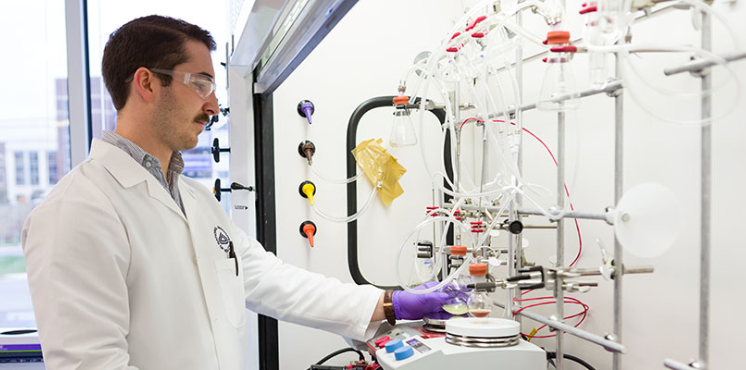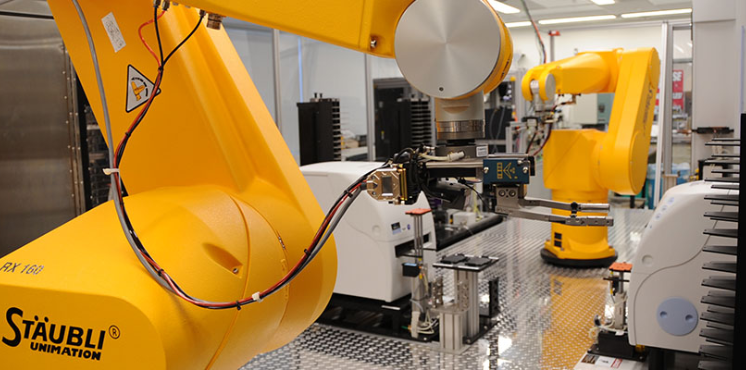Informatics
Our informatics scientists collaborate closely with other investigators and develop algorithms and software to disseminate research results to the broader community.
About Informatics
Contact
Informatics plays a key role in organizing, processing, analyzing, and interpreting the large quantity and variety of data generated in translational research. The Informatics (IFX) Core covers a wide array of expertise, including bioinformatics, multi-omics, cheminformatics, clinical informatics, data science, software engineering, UI/UX research and design, and project management. IFX Core team members collaborate extensively with informaticians embedded in other branches and cores within the Division of Preclinical Innovation (DPI)and with other colleagues across DPI to produce methodologies, resources and software for the translational research community.
IFX Core Mission
The mission of the IFX Core is to derive actionable insights from integrating translational research data and to accelerate the translation of findings into the clinic by:
- Identifying biological and chemical mechanisms that underlie diseases, including rare diseases, and their development, drug mechanisms of action and treatment response using novel or existing methods
- Improving use and interpretation of metabolomics and other omics datasets by developing new methods or enhancing the application of existing methods
- Producing open, comprehensive resources to accelerate translational research efforts, spanning ingredient/drug regulatory information, target annotations, disease annotations and molecular phenotypes
- Producing tools for the analysis and interpretation of complex high-throughput datasets
- Developing, optimizing and testing models to prioritize targets and therapeutic opportunities, and identifying repurposed drugs through collaborations with NCATS’ DPI branches
- Enhancing transparency and open research by adhering to user-centric and FAIR (Findable, Accessible, Interoperable, Reproducible) best practices
- Expanding the use and understanding of informatics in translational research through workshops, training and mentoring
What We Do
Efforts within the IFX Core can be categorized into four main parts:
- Building Standards, Knowledge Sources and Software: Integration, curation and public rendering to support analysis of various types of experimental and curated datasets
- Translational Data Analytics: Development of custom workflows and new methodologies to help interpret complex, large-scale datasets, including multi-omic and clinical data
- Scientific Computing Services and Research: Development, maintenance and deployment of cheminformatics and bioinformatics workflows/pipelines; web and mobile apps to disseminate our robust methods and data; bioinformatics and cheminformatics collaborative work with non-informaticians (within and beyond NCATS)
- Metabolomics and Multi-Omics: Profiling to identify putative biomarkers and elucidate disease processes
These four components are coordinated through our governance structure and efforts where one component informs efforts in another.
Our Team
Informatics scientists and software developers play a crucial role in NCATS translational programs and work closely with experts in other biomedical and translational research fields (biology, chemistry, epidemiology, biostatistics, etc.) within and outside NCATS. Collectively, they address the full breadth of translational science challenges, including drug development and repurposing; the development of model systems for drug and toxicity screening; and the development of comprehensive and state-of-the-art software, resources and analytical tools. To meet these broad demands, informatics scientists and software developers work cross-functionally and have a wide array of expertise. Learn about the Informatics Team.

Dammika Nandanie Amugoda, M.S.
Curator/Research Scientist
Division of Preclinical Innovation
Informatics

Djawed Bennouna, Pharm.D., M.Sc., Ph.D.
Research Scientist (Metabolomics)
Division of Preclinical Innovation
Informatics

Haley A. Chatelaine, Ph.D.
Intramural Research Training Award Postdoctoral Fellow
Division of Preclinical Innovation
Informatics



Related Research

Analytical Chemistry
Our analytical chemistry experts and state-of-the-art lab support early-stage chemical development.

Automation
Our automation experts work closely with our scientists to support various research activities, including high-throughput screening and assay development and optimization.

Compound Management
Our compound management team uses sophisticated and automated techniques to support NCATS screening activities.


